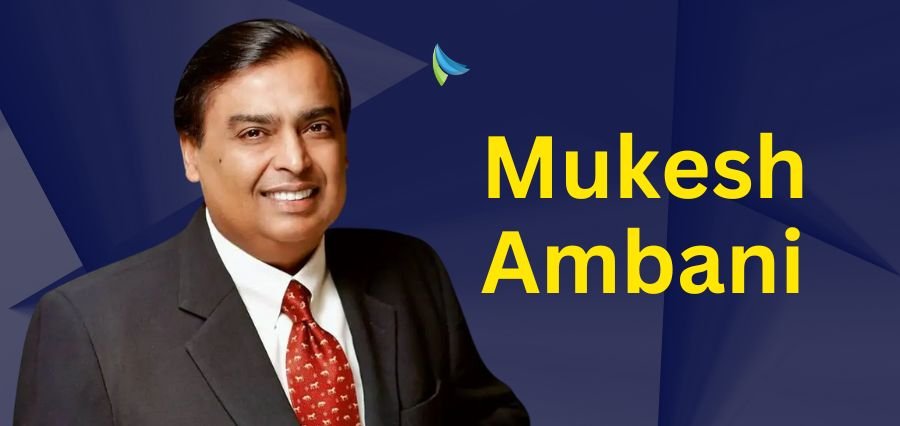The Ascent of Asia’s Richest Man: Mukesh Ambani Empire
Mukesh Ambani’s ascent to Asia richest man is pure phenomenal. Mukesh took over Reliance Industries from his legendary father, Dhirubhai Ambani, but Mukesh’s vision converted the company into a global conglomerate. Reliance began in its early childhood in petrochemicals and refining but under Mukesh diversified aggressively into telecom (with Jio), retail, renewable energy, and digital services.
The change-maker was the 2016 entry of Jio. In mere years, Jio changed the face of the Indian telecom sector, offering inexpensive internet to crores and digitally empowering industries. This single move increased the net worth of Ambani by billions and made him Asia richest man.
Today, Reliance Industries has a market capitalization that rivals some of the world’s top corporations. Its portfolio spans everything from fuel retailing and textiles to cloud computing and renewable energy. Ambani’s ability to anticipate market shifts and make bold bets has placed him at the helm of Asian wealth.
Asia Richest Man and His Diverse Business Interests
It is the scope and depth of his interests that distinguish the Asia richest man from competitors. Mukesh Ambani does not have holdings in the core industries only. His foray into technology and renewable energy is testimony to his attempts to future-proof Reliance.
- Retail & Consumer Goods: By Reliance Retail, Ambani has created India’s biggest retail chain of stores reaching millions and online-enabling small stores at a rapid rate through its JioMart platform.
- Technology & Digital India: Jio Platforms has been financed by international tech giants like Facebook and Google, ensuring Ambani’s vision of the digital era.
- Green Energy Transition: Reliance will be spending $10 billion over three years on renewable energy sources like hydrogen fuel and solar power, world sustainability objectives reflect.
These business leaders describe how the Asia richest man is not a title of wealth—it’s a vision title of leadership, rebirth, and entrepreneurship.
Why Asia Became a Playground for Billionaires
The presence of billionaires in Asia, especially the Asia richest man, is not a coincidence. Asia has emerged as the hub for innovation, investments, and industrialization, giving rise to an ultra-high-net-worth boom.
- Mass Consumer Base and Population: Over half the population of the world, Asia boasts a size opportunity like no other.
- Digital Disruption: Digital adoption has accelerated at lightening speed in India, China, and Southeast Asia, making way for next-generation billionaires in e-commerce, fintech, and SaaS.
- Government Policies: FDI, startup policies, and pro-business governments have enriched corridors in Asia as richer corridors.
The Asia richest man in the above example is the representative of the economic prosperity of the continent and the prestige status of entrepreneurs.
Competition for Asia Richest Man Title
While still in charge, Mukesh Ambani, the Asia richest man is a temporary and unstable appellation in this day’s competition. Gautam Adani, Zhong Shanshan, and Ma Huateng are among some of the billionaires who improved their performance in the last decade, which puts Asia’s unstable but flourishing business scene.
Gautam Adani, the infrastructure baron, climbed to the verge of the top only to be greeted by market headwinds. His group’s aggressive forays into ports, energy, and logistics are a testament to how ambition creates scale.
Zhong Shanshan, China pharma and bottled water baron, shocked the world once to unseat tech barons on mind-bending share price valuations.
Ma Huateng (Pony Ma) and Jack Ma are the better comparison of how entrepreneurship within the tech industry can set an individual richer than ever before, particularly in the age of digital consumption.
Constantly changing characters like these guarantee the struggle for Asia richest man to be a merciless battle and thus are an economic trend forecaster for the continent.
Legacy, Philanthropy, and Social Impact
Along with being the Asia richest man goes a great deal of responsibility as well. Mukesh Ambani diversified subsequently in the cause of charity, and more particularly into education, healthcare, and rural development through Reliance Foundation, whose patron is his wife Nita Ambani.
As Asia grapples with inequality and environmental challenges, the role of billionaires is under scrutiny. The expectation is not just to generate wealth, but to distribute it meaningfully. Ambani’s recent investments in rural digitization and clean energy projects reflect a growing awareness of this responsibility.
In India alone, just to cite one instance, Reliance’s healthcare initiatives during COVID-19 times and education initiatives were the secret of relief. All of them are transforming ultra-riches out of capitalists into the change-makers.
The Future of Asia’s Wealth Leaders
With markets globally and the business world turned on their head, the next Asia richest man could be born in the next-new industries like space technology, biotech, or artificial intelligence. As the valuations of old economy energy and infrastructure power behemoths rise, the champions could be crowned in the next two decades that can unlock game-changing potential.
Mukesh Ambani also dominates today, not just because of past success, but because of his years-long dedication to changing. His succession plan, whereby he is bringing his children into central Reliance verticals, says it all about long thinking for long-term domination of Asia’s wealth chain.
Conclusion: More Than Just a Title
Asia’s richest man is more than a tagging on a net worth line—it’s a badge of honor for a master market maker, a visionizing entrepreneur, and a borderless achiever. The Mukesh Ambani tale tells how vision, timing, and courage can turn a business legend into a legendary one.
As increasingly more Asia becomes the power center of the world economy, the world will look to its giants propelling it. In the meantime, Mukesh Ambani embodies new Asian aspiration— ambitious, powerful, and prepared for tomorrow.

